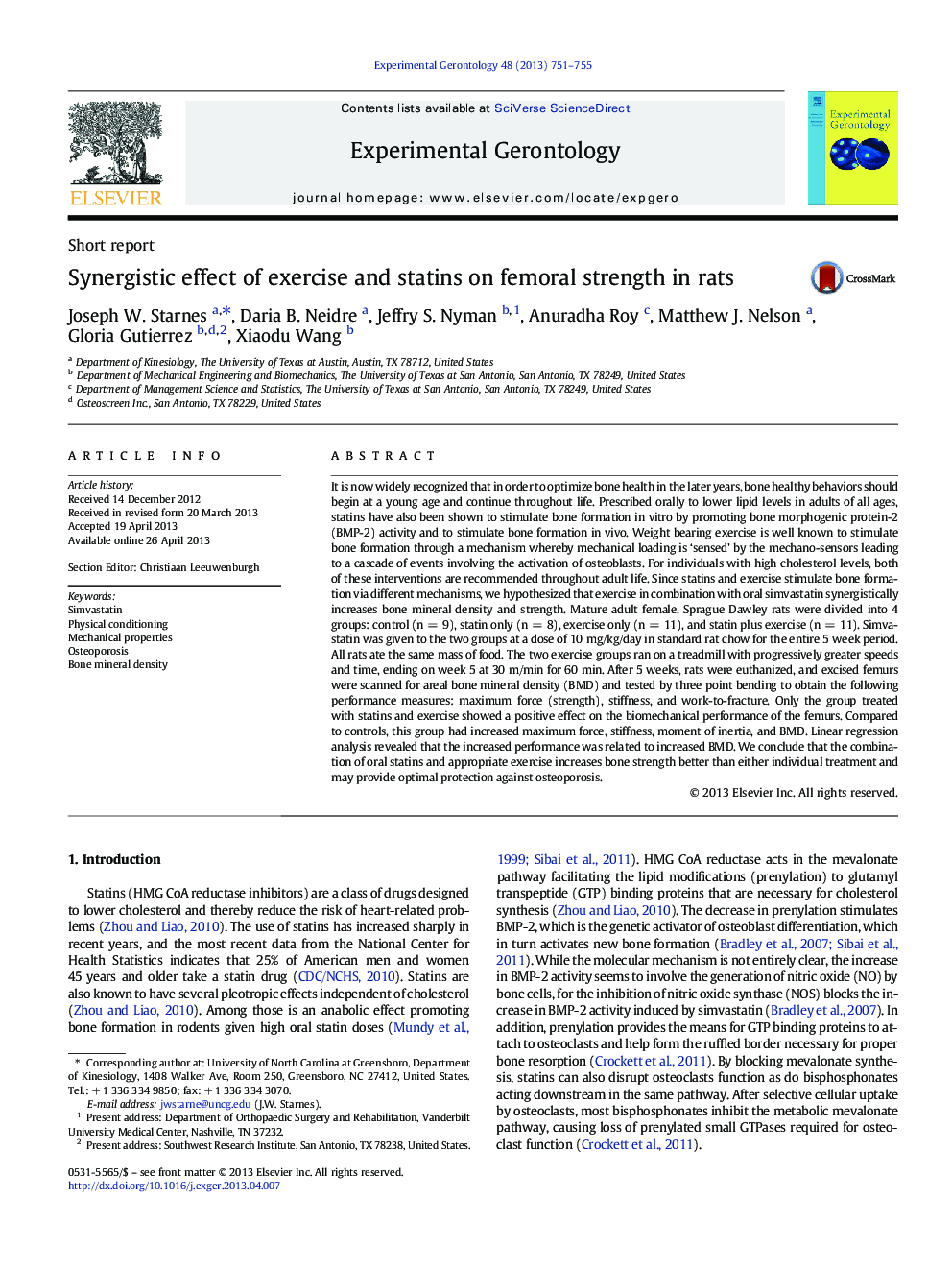| کد مقاله | کد نشریه | سال انتشار | مقاله انگلیسی | نسخه تمام متن |
|---|---|---|---|---|
| 1906364 | 1046283 | 2013 | 5 صفحه PDF | دانلود رایگان |
عنوان انگلیسی مقاله ISI
Synergistic effect of exercise and statins on femoral strength in rats
دانلود مقاله + سفارش ترجمه
دانلود مقاله ISI انگلیسی
رایگان برای ایرانیان
کلمات کلیدی
موضوعات مرتبط
علوم زیستی و بیوفناوری
بیوشیمی، ژنتیک و زیست شناسی مولکولی
سالمندی
پیش نمایش صفحه اول مقاله

چکیده انگلیسی
It is now widely recognized that in order to optimize bone health in the later years, bone healthy behaviors should begin at a young age and continue throughout life. Prescribed orally to lower lipid levels in adults of all ages, statins have also been shown to stimulate bone formation in vitro by promoting bone morphogenic protein-2 (BMP-2) activity and to stimulate bone formation in vivo. Weight bearing exercise is well known to stimulate bone formation through a mechanism whereby mechanical loading is 'sensed' by the mechano-sensors leading to a cascade of events involving the activation of osteoblasts. For individuals with high cholesterol levels, both of these interventions are recommended throughout adult life. Since statins and exercise stimulate bone formation via different mechanisms, we hypothesized that exercise in combination with oral simvastatin synergistically increases bone mineral density and strength. Mature adult female, Sprague Dawley rats were divided into 4 groups: control (n = 9), statin only (n = 8), exercise only (n = 11), and statin plus exercise (n = 11). Simvastatin was given to the two groups at a dose of 10 mg/kg/day in standard rat chow for the entire 5 week period. All rats ate the same mass of food. The two exercise groups ran on a treadmill with progressively greater speeds and time, ending on week 5 at 30 m/min for 60 min. After 5 weeks, rats were euthanized, and excised femurs were scanned for areal bone mineral density (BMD) and tested by three point bending to obtain the following performance measures: maximum force (strength), stiffness, and work-to-fracture. Only the group treated with statins and exercise showed a positive effect on the biomechanical performance of the femurs. Compared to controls, this group had increased maximum force, stiffness, moment of inertia, and BMD. Linear regression analysis revealed that the increased performance was related to increased BMD. We conclude that the combination of oral statins and appropriate exercise increases bone strength better than either individual treatment and may provide optimal protection against osteoporosis.
ناشر
Database: Elsevier - ScienceDirect (ساینس دایرکت)
Journal: Experimental Gerontology - Volume 48, Issue 8, August 2013, Pages 751-755
Journal: Experimental Gerontology - Volume 48, Issue 8, August 2013, Pages 751-755
نویسندگان
Joseph W. Starnes, Daria B. Neidre, Jeffry S. Nyman, Anuradha Roy, Matthew J. Nelson, Gloria Gutierrez, Xiaodu Wang,